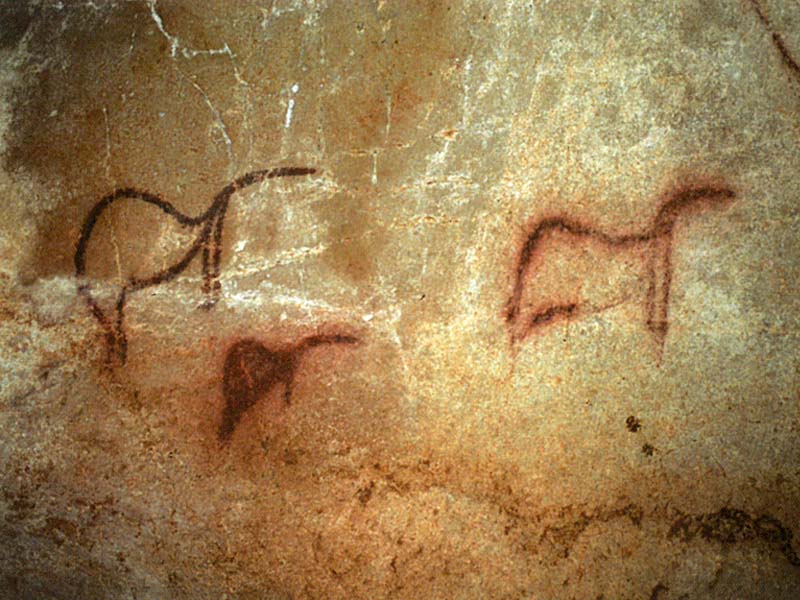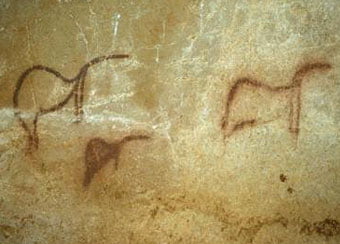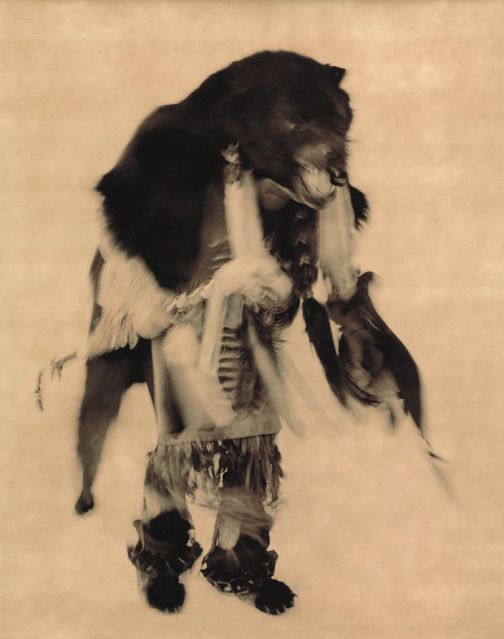di Alessandra de Nardis
André Leroi-Gourhan (1911-1986), considered one of the world's greatest specialists in prehistory, hypothesized that animals were part of a symbolic system of the living world maintained with small variations throughout the duration of Paleolithic art. This symbolic system implied a distribution of animal species into two distinct groups that could be traced back to the division of the human world between man and woman: men corresponded to horses, deer, ibex, lions, dogs and rhinoceroses, women corresponded to bison, aurochs or the wild ox. Leroi-Gourhan based this hypothesis in particular on the sexualization of figures on an isolated Pech-Merle panel, where red silhouettes evoke schematic women and bison with gradual transition from one theme to another.

More recently the research of another Frenchman, Julien D'Huy, specialized in the phylogenetics of myths with a doctorate in history at Institute of African Worlds, hypothesizes that the bison women of Pech-Merle are instead the illustration of a myth that he tried to reconstruct in his research, The motifs of the femme-bison. Essay on the interpretation of a prehistoric myth by Julien D'HUY (Bullettine Mythologie Française n° 242 mars 2011- Société de Mythologie Française).
To find the "first story" that could provide the original matrix, D'Huy collected and analyzed dozens and dozens of myths and legends defined as "zoemes" - animals with a semantic function - from all over the world. Borrowing phylogenetic trees from evolutionary biologists as statistical methods of classifying living species, he discovered a nucleus in which the same myth of an animal-woman seems to be hidden.
The myth is summarized as follows:
A man steals the skin of a female animal for bathing; the man hides it or burns it, the woman is forced to marry him. The rest is variable. If the man has not destroyed the skin, the woman ends up finding it and flees in her animal form; the man then goes in search of his missing wife, overcoming many tests. For the scholar this myth already existed during prehistory, indeed it is what provided the basis for the birth of all those myths still scattered today across all the continents and which basically all talk about the same thing. The conclusions he reaches do not satisfy us, but the collection of his narratives is effectively proof of a primordial story with a very profound meaning, you just need to have eyes different from ours to be able to read it.
Julien D'Huy finds this universal myth easily identifiable and finds it surprising how little time and distance have influenced it. In a whole series of Indo-European and Asian myths, a bird-woman deposits her feather dress which is stolen from her by her future husband to bathe her. In the Faroe Islands and Scotland the bird is replaced by seals, in Micronesia by porpoises, and in the Arctic by a fox. In Croatia we have a wolf while the people of the Balkans tell of a goat that, born to a sterile woman who wants a child at all costs even if it were an animal, leaves its skin to go to draw water and is surprised by a prince who marries her. After marriage she appears sometimes in her human form, sometimes in her animal form until finally her husband removes the spell by burning her skin. In Cameroon a story tells how a hunter manages to marry a buffalo woman whose skin he had stolen from the shore while swimming with his companions: they have many children, but when she finds the skin that her husband had hidden, she leaves him, taking her children away . A similar myth is found in Chad where the hunter and the buffalo woman have a son. In Africa the supernatural woman can also be forced to marry by a hunter who steals her donkey or elephant skin. In Mesoamerica, in a very widespread myth, for example among the Tlapanec, the Tepecano and the Totonac, the skin of the animal-woman is that of a dog stolen by the only survivor of the flood; elsewhere she is a turtle whose shell has been stolen.
Since fauna varies depending on climates and places, the researcher deduced that to preserve its essence the original story finds animals to adapt from time to time which allow it to keep the basic form unchanged.
The peoples who with subsequent migrations have occupied the different regions of the world have identified various animal species capable of replacing those that were missing to recreate the myth. The fact that the myth of the animal-woman is found in Africa, Eurasia, the Americas and even in Australia would prove a very great historical archaism, it undoubtedly appeared before the peopling of America, since the belief would have passed from Eurasia to this continent when it was still possible, i.e. before the Holocene. It is therefore likely that this myth dates back to at least the European Upper Paleolithic, and may have been known to the Pech-Merle artists.
Furthermore, in the cave there is a detail of a stream of water flowing into an orifice located exactly under the panel where women and bison have been represented, arranged in such a way as to watch the stream disappearing underground less than a meter below them . This close association, at the point of absorption of the waters of the cavity, recalls the motif of the animal-woman who always removes her skin when she goes to bathe and constitutes a further clue in favor of the researcher's interpretative hypothesis.
But what does this story mean?
For D'Huy the story of the quadruped woman is a metaphor of a hyper-sexuality and/or hyper-fertility of the woman which must always be kept under control and the forced union with the hunter man is necessary for a "civilized culture". As for the choice of quadruped zoems - wild or domestic - according to the researcher, it depends on the type of society that has adopted it depending on whether it is more of the hunter or cultivator type.
In Pech-Merle the detail on the ceiling where each of the three women is drawn with a single sign is covered by a double line, an overlap that suggests to the scholar a coupling, and would therefore have been a way to emphasize the sexual and fertile nature.
But is this the only way to interpret these images?
Both hypotheses are based on the same assumption, in which female sexuality is the center of a narrative that ends with the taking of control over it. Perhaps these theories have the observer's flaw: whoever enunciated these hypotheses looked at the bison women of Peche-Merle with male eyes and a male historiography.
But what if what is depicted on one of the ceilings of the Peche-Merle cave was instead a dance? What if we considered it as the representation of gestures aimed at recreating the movements of the bison? Women who move their naked bodies, covered with the animal's skin, in a sacred dance: after having washed away the human part and put on the skin, they become the bison and all together the herd and are able to interact with humans to find an agreement of survival? It would certainly not be new to use masks and disguises through which to lose one's identity and take on that of the animal or spirit with which to interact.
There is a legend of the Lakota-Sioux Indians which tells of a female white buffalo who taught the Lakota-Sioux how to survive on their lands using the animals offered by nature and how the existence of millions of bison meant infinite abundance; when she left she warned that she would return to restore harmony on the planet. These ancient legends carry echoes of when humans depended so much on animals that they had to talk to them. Indeed, it was the animals that gave essential information to humans. Moving from one state to another: woman-bison-woman, a means of entering into total harmony and thus accessing that indispensable union that would allow survival.
There is a widespread opinion that the artists of the Paleolithic caves were shamans (Jean Clottes, Les Chamanes de la Préhistoire: Transe et Magie dans les Grottes Ornées) who entered trance to connect with the spirit world and it has been hypothesized recently (Dean Snow, Pennsylvania State University, studies published in the journal American Antiquities) that many of these artists were women and therefore, why not see in these images a sequence of sacred dance painted by whoever was supposed to represent it? Humans capable of entering into total harmony with the body of a female animal, bearer of life, fecundity and abundance. Certainly not everyone could represent that dance, the animal's skin can in fact take possession of the wearer and the risk is being trapped inside. What if the shamans had wanted to represent the ritual to be performed as teaching to the initiates? In the cave, as a place of memory, of the ancestors, of those who before them had given life to that sacred rite, that dance could be represented in an equally sacred dimension and perhaps inaccessible to most.
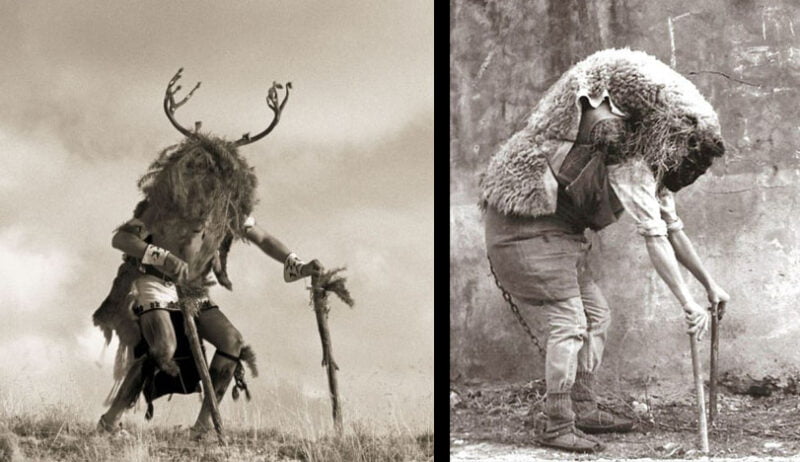
To conclude, the suspicion that the interpretation of the zoema discovered by D'Huy is overloaded with meanings foreign to those of the time is, in my opinion, confirmed by the ending of the story which sees the man steal the fur from the animal-woman and then forcing her to be a human wife = submissive. An ending that recalls the time in which man took possession of the art of shamanic disguise, claiming the role only for himself and excluding women from the dimension of mediators of the sacred, a role which if it had not been interrupted more than any other would have allowed different realities than the one we are trapped in now.
There is still a lot to say about the bison women of Peche-Merle and it is certain that they deserve an in-depth study by scholars with the ability to overcome the cultural barrier created by official history. The mask is an investiture and who knows if sooner or later a woman will go to Peche-Merle invested with the gift that came from her ancestors.
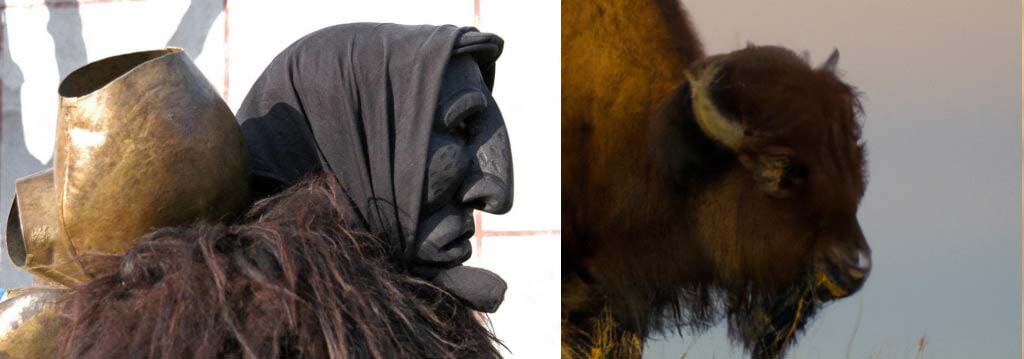
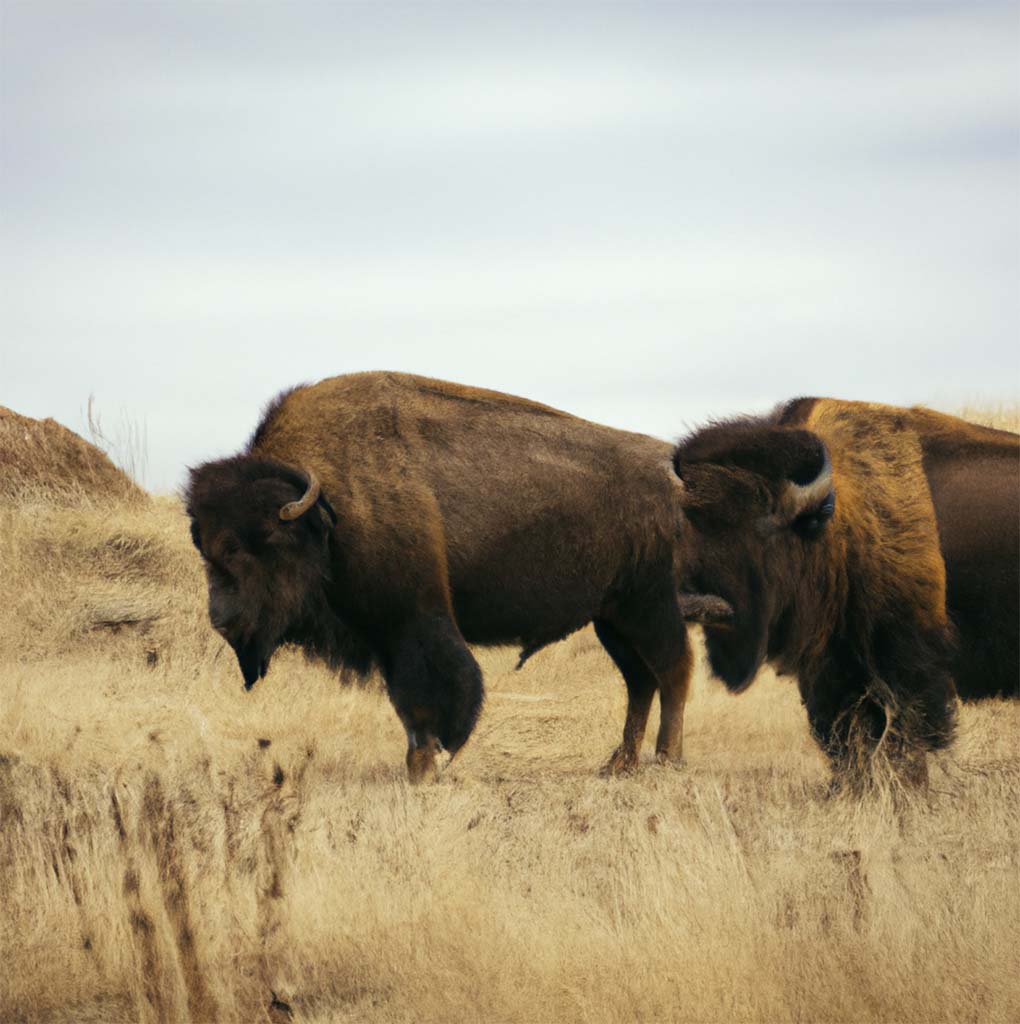
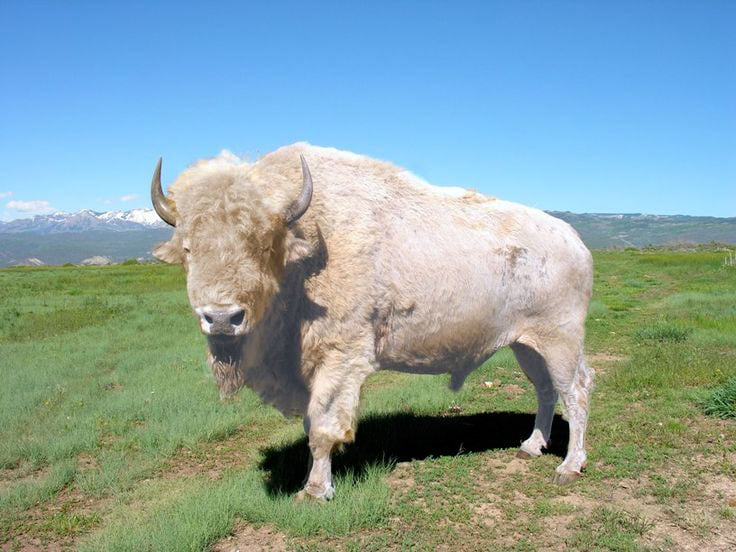
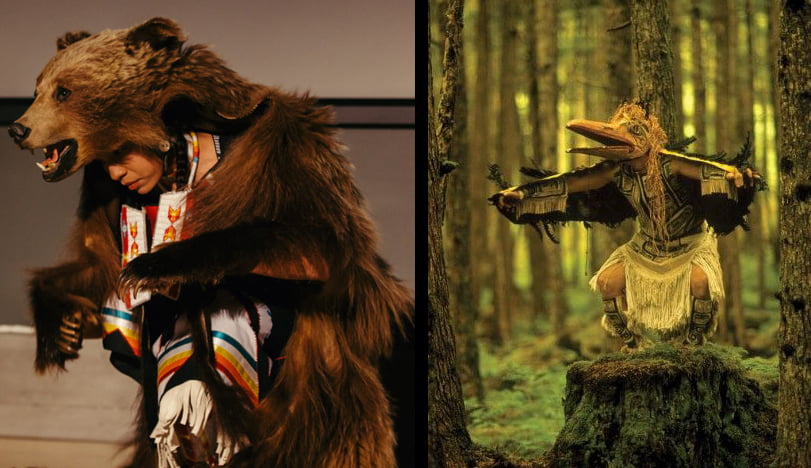
Alessandra de Nardis – 23 April 2021

